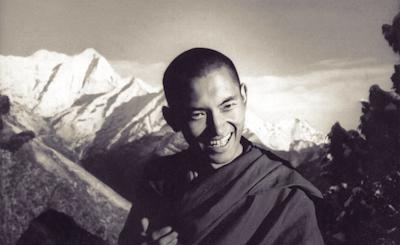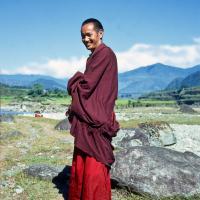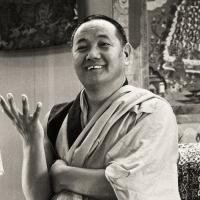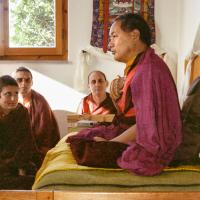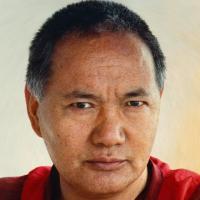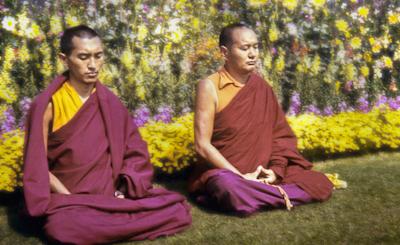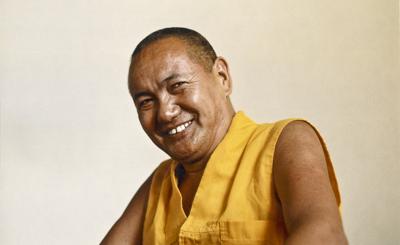- Medicine Buddha puja and Medicine Buddha practice.
- Do the eight prayers that are normally done in monasteries when someone passes away: King of Prayers (the Maitreya long prayer with the mantra Jhampal Monlam); the dedication section from the Guide to the Bodhisattva Way of Life; the Prayer of the Beginning, Middle and End; dedication prayers for happiness (De mon); Je se Tub jog—Until Enlightenment; the short Maitreya Prayer (called Maitreya's prediction); Dechen Lhundrup—Effortlessly Achieving Bliss; also Confession to the Thirty-five Buddhas. Students should recite whichever prayers are available in English.
- Recite a certain number of the King of Prayers, for example, for one full day or for a weekend.
- Offer Vajrasattva tsog.
- Make many thousands of light offerings. Make extensive offerings of water bowls, flowers, or other offerings.
- Practice nyung näs. This could be done over one weekend.
- Do a weekend Vajrasattva retreat, Chenrezig retreat, or Medicine Buddha retreat. Or you can do all of them.
- Meditate on tonglen and dedicate it to the person who has died. This can be for half a day, or for one session. While doing the meditation, recite OM MANI PADME HUM.
- Recite the Diamond Cutter Sutra.
- Recite and meditate on the Heart Sutra.
- Meditate on emptiness for one session, or for one day. Or you could do a weekend retreat on emptiness with all the students, dedicating it to the person who died.
- Perform Dorje Khadro fire puja as a group with the students, dedicating it to the person who died.
- Make stupa tsa-tsas. As you put the four powerful mantras in the tsa-tsas, dedicate them to the person who died and say his or her name. Doing this can create the causes for a person who is going to be reborn in the lower realms to have a good rebirth instead.
- Make Mitukpa tsa-tsas.
- Make thangkas or statues, and dedicate them to the person’s good rebirth. (Of course, it doesn’t have to be a 500-foot statue!)
- Publish Dharma books.
- If the person who died practiced tantra, then do self-initiation of the person’s main deity, and offer tsog to the main deity. Also, do a weekend retreat on the person’s main deity.
- Make offerings on the person’s behalf. It is very powerful to make offerings to the Sangha on the person’s behalf. Also, offer to lay students who have the same guru as the person who died. This collects a vast amount of merit, which you can then dedicate to the person who died. Do not offer food to the dead person. Instead, make offerings of food, flowers, lights, and so on to the Three Jewels on behalf of the dead person, to accumulate merit for him or her. Then the food can be distributed afterward.
- Also, make offerings to the person’s gurus, or you can offer to your own guru on that person’s behalf.
- Offer charity or offer to the Dharma center on the person’s behalf, as the center is a place for people to meditate in, to learn Dharma, where people come to purify their minds, collect merit, and meditate on the path (lamrim).
- Offer charity on the person’s behalf to sick people, homeless people, to solve other people’s difficulties, to charities, and to poor people.
- Offer charity on the person’s behalf to animals.
These are all things that the Dharma center can organize as group events, or people can do individually.














